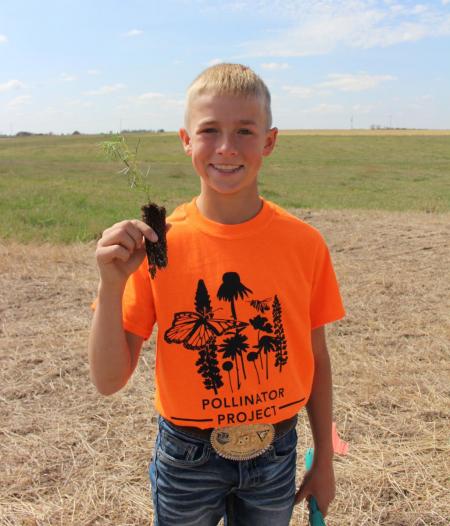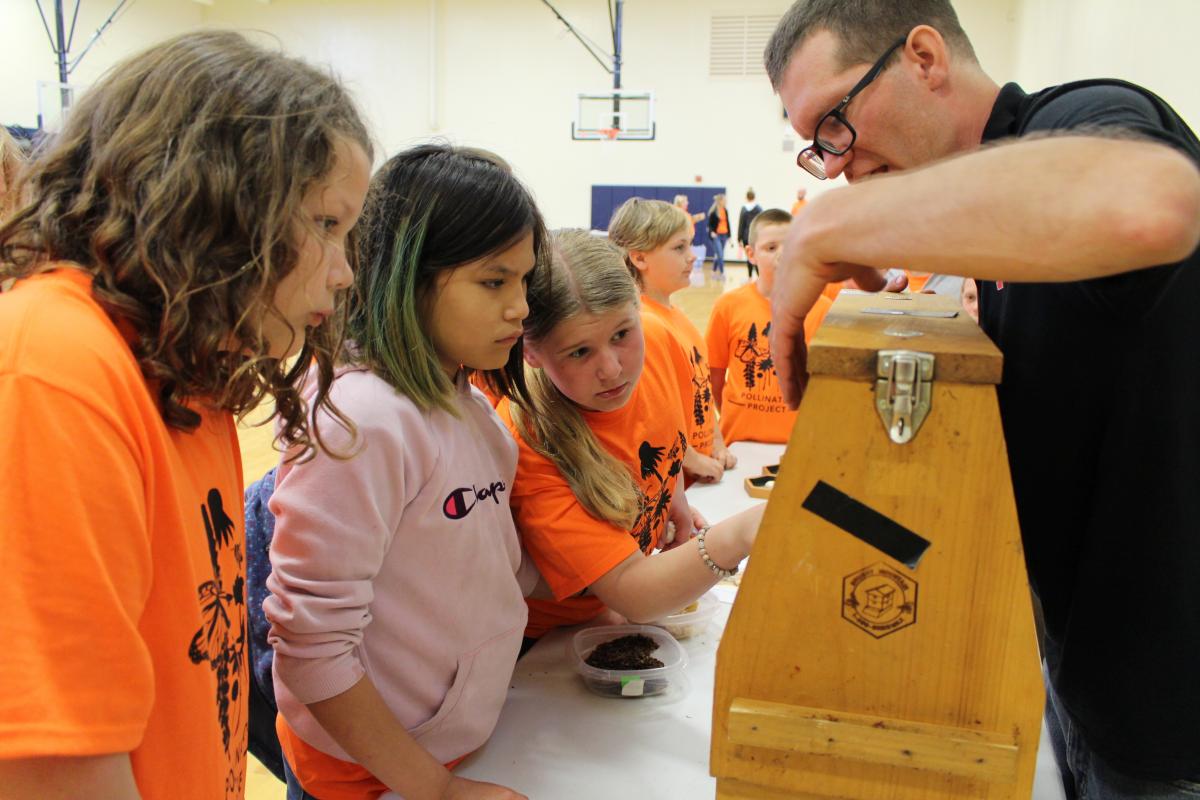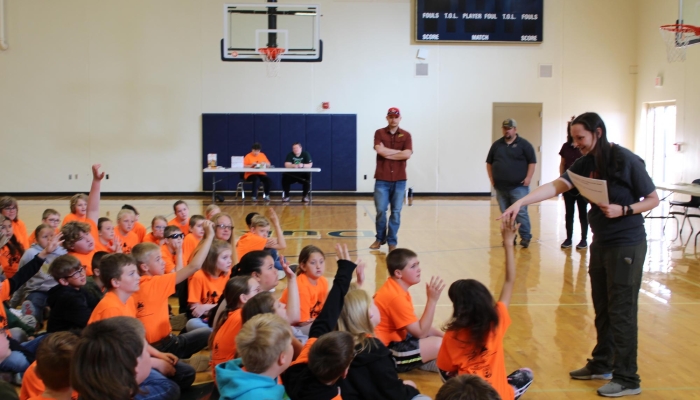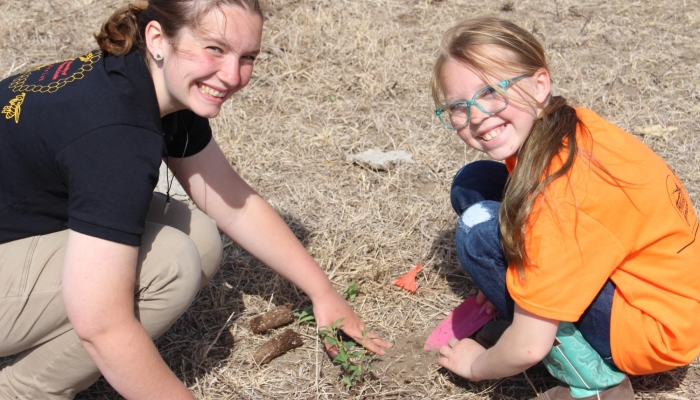The Birds and the Bees (and the Bats and Butterflies, too)
Pollinator Day Event Held in York
Dozens of youngsters clad in vibrant orange tee shirts and filled with “school’s-nearly-out” energy packed the practice gym at York High School on Thursday for a Pollinator Day event, hosted annually by Nebraska Pheasants Forever. More than 130 students from local public and private schools participated in hands-on learning that reinforced the message: if you like to eat, you should care about pollinators.
Through presentations from Pheasants Forever, Upper Big Blue Natural Resources District, and University of Nebraska Lincoln College of Agricultural Sciences and Natural Resources, students learned about pollinator habitat requirements, what pollinators do, and why they are vital to a flourishing ecosystem. From the humble honeybee to the celebrated Monarch butterfly, students learned that pollinators are an essential component of agriculture in Nebraska. “Without pollinators, we wouldn’t have ice cream!” Nathan Pflueger, a precision agriculture coordinator for Pheasants Forever, told students, linking the plants that cows eat to the beetles, moths, and even spiders whose pollination activities keep the plants proliferating.
 Pflueger also showed the kids a picture of the inside of a pheasant chick’s crop (part of its digestive system) so they could see for themselves that pollinators form a foundational element of the food web for Nebraska’s game birds. In the wild, pheasants eat only insects for the first month of their life. Pollinators not only keep the chicks’ habitat full of blooming ground cover, they provide essential protein in their diets.
Pflueger also showed the kids a picture of the inside of a pheasant chick’s crop (part of its digestive system) so they could see for themselves that pollinators form a foundational element of the food web for Nebraska’s game birds. In the wild, pheasants eat only insects for the first month of their life. Pollinators not only keep the chicks’ habitat full of blooming ground cover, they provide essential protein in their diets.
Students buzzed from station to station in the gym, collecting knowledge like pollen at each stop. A favorite was seeing the activity inside a beehive and learning about the social hierarchy and daily habits of these complex social creatures.
They also spent time learning about native Nebraska plants that make great pollinator and pheasant habitat, including big and little bluestem grasses, several milkweed varieties, purple coneflower, and blanket flower. Then they put their newly acquired knowledge to good use by planting a variety of these and other plants on a two-acre plot near York’s wellhead on the northeast side of town. The plot is part of the Project GROW demonstration site that is operated in partnership with the City of York and the Upper Big Blue Natural Resources District. The purpose of Project GROW is to improve the soil above the city’s wellfield as a means of protecting the water that residents consume.
Students hand-broadcast buckets of seeds and used trowels to break up the dry soil to plant more mature plant starts. They also enjoyed exploring the great outdoors, from catching a garter snake to collecting bird feathers, to investigating the many badger holes. At the end of the activity, students were given their own packets of pollinator mix to plant at home, along with a stick of honey to enjoy.
To complete the educational experience, students will return this autumn to see how their plants have grown. Led by researchers from the University of Nebraska’s Department of Entomology, students will have the opportunity to tag monarch butterflies as they migrate south for the winter. As monarchs and other pollinator populations continue to decline due to loss of habitat and food sources, pesticide overuse, and disease, activities that engage young people in conservation activities are ever more urgent.
Funding for this event was provided in part by EPA Region 7 Environmental Education Grant NE97768001. Pheasants Forever’s Pollinator Habitat Outreach Program is made possible by funding support from Corteva, Bayer, USFWS, Bass Pro Shop’s and Cabela’s Outdoor Fund, Pollinator Partnership, Monarch Joint Venture, and the organization’s local volunteer chapters.
According to the Nebraska Department of Agriculture, "Honey bees pollinate more than 90 cultivated crops with a combined annual value of $10 billion. Nebraska crops dependent upon bees for pollination include: alfalfa, vetch, sweet clover, sunflower, and other seed crops. Many fruit and vegetable crops also benefit from bee pollination including: watermelons, cucumbers, cantaloupe, pumpkins, apples, cherries, and pears. Honey bees pollinate many plants that are important in soil conservation. Many of the wild flowers that cover our woodlands and meadows also depend on honey bee pollination. We must protect and conserve our pollinators. No other insect is more easily managed or relocated for specific pollination, nor does any other insect pollinate such a wide range of plants."



